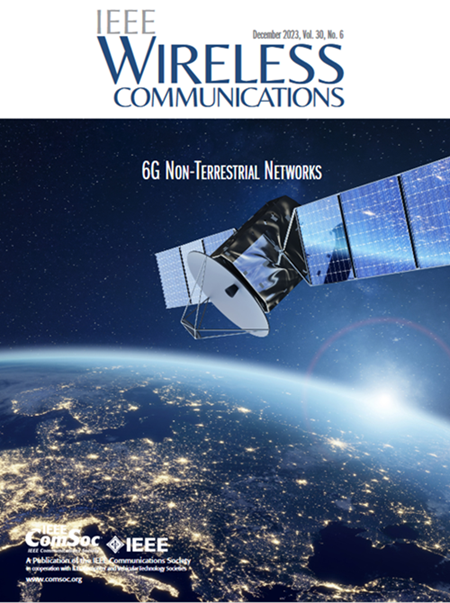无线光通信网络的量子异构拓扑优化模型
IF 10.9
1区 计算机科学
Q1 COMPUTER SCIENCE, HARDWARE & ARCHITECTURE
引用次数: 0
摘要
光无线通信技术以其高带宽、低成本的优势,成为未来6G通信中一种有效的补充接入方式。然而,有限的通信距离和恶劣的天气条件严重影响了光无线通信的服务质量。如何规划由基站和终端组成的异构拓扑结构,对保证光无线通信网络的鲁棒性和通信效率至关重要。通过分析这两个指标之间的关系,并引入量子粒子群的思想,提出了一种量子多目标拓扑优化模型,以提高光无线通信网络的鲁棒性和通信效率。该模型利用量子行为的不确定性,摆脱了粒子群因速度上限而无法探索更大解空间的限制,增强了粒子的全局探索能力。此外,采用自适应网格法对非劣解进行划分,使解分布更加均匀,进一步提高了拓扑优化的效果。实验结果表明,与传统的多目标粒子群算法相比,该模型可大大提高无线光通信网络的鲁棒性和通信效率。本文章由计算机程序翻译,如有差异,请以英文原文为准。
A Quantum-Behaved Heterogeneous Topology Optimization Model For Optical Wireless Communication Networks
Optical wireless communication technology has become an effective supplementary access method in the future 6G communication due to its advantages of high bandwidth and low cost. However, the limited communication distance and unfavorable weather seriously affect the quality of service of optical wireless communication. How to plan the heterogeneous topology composed of base stations and terminals is very important to ensure the robustness and communication efficiency of optical wireless communication networks. Byanalyzing the relationship between these two indicators, and introducing the idea of quantum particle swarm, we propose a quantum-behaved multi-objective topology optimization model to enhance the robustness and communication efficiency of optical wireless communication networks. This model utilizes the uncertainty of quantum behavior to get rid of the limitation that particle swarms cannot explore a larger solution space due to the upper limit of speed, and enhance the global exploration ability of particles. In addition, the adaptive grid method is adopted to divide the non-inferior solutions, so that the solution distribution is more uniform, and the effect of topology optimization is further improved. The experiments show that compared with the traditional multi-objective particle swarm algorithm, our model can greatly improve the robustness and communication efficiency of optical wireless communication networks.
求助全文
通过发布文献求助,成功后即可免费获取论文全文。
去求助
来源期刊

IEEE Wireless Communications
工程技术-电信学
CiteScore
24.20
自引率
1.60%
发文量
183
审稿时长
6-12 weeks
期刊介绍:
IEEE Wireless Communications is tailored for professionals within the communications and networking communities. It addresses technical and policy issues associated with personalized, location-independent communications across various media and protocol layers. Encompassing both wired and wireless communications, the magazine explores the intersection of computing, the mobility of individuals, communicating devices, and personalized services.
Every issue of this interdisciplinary publication presents high-quality articles delving into the revolutionary technological advances in personal, location-independent communications, and computing. IEEE Wireless Communications provides an insightful platform for individuals engaged in these dynamic fields, offering in-depth coverage of significant developments in the realm of communication technology.
 求助内容:
求助内容: 应助结果提醒方式:
应助结果提醒方式:


